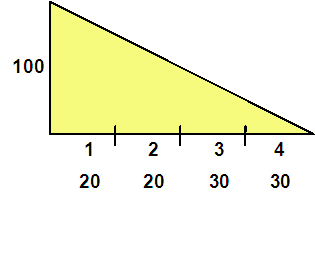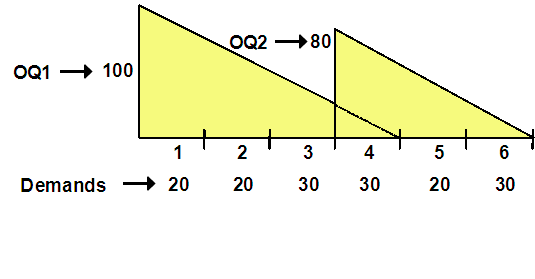Accounting for Cycle Inventory in Safety Stock Calculation
Introduction to Accounting for Cycle Inventory in Safety Stock Calculation
Enabling Cycle Stock Functionality
To enable the ability to calculate safety stock with respect to cycle stock you need to set the profile option MSR: Enable Cycle Stock Adjustment in your personal profile values. Valid values are:
-
Yes: Calculate safety stock using cycle stock
-
No (default): Do not calculate safety stock using cycle stock
Target Service Level De-rating
Target Service Level can be de-rated for calculating safety stock requirements based on the cycle inventory levels. The safety stock inventory that is calculated, based on the de-rated service level values in conjunction with the cycle inventory, results in the original target service levels
The optimization engine de-rates the target service level based on the cycle inventory levels. It then uses the de-rated target service level to calculate the safety stock. The engine also de-rates the target service level based on how many buckets of demand the order quantity represents. For example,
-
Target service level (TSL): 0.99
-
Order quantity (OQ): 100
The demands are:
-
Week 1: 20
-
Week 2: 20
-
Week 3: 20
-
Week 4: 20
Total demand is 100.

The demands consume the order quantity in four weeks. Thus the total demand of Week 1 through Week 4 is:
20+20+30+30=100 Order Quantity
The de-rated service level is: 0.96 [0.994]
The optimization engine de-rates the target service level for each order of the item.
IO calculates “W” dynamically based on an order quantity and future demands that are covered by that order quantity. For example,

In the example presented by the above diagram, “W1” is calculated based on the first order quantity (OQ1) and the future demands that consume this order quantity. As a result W1 = 4 since the order quantity of 100 is consumed by demands of time buckets 1 through 4:
100 = 20 + 20 + 30 + 30 W1 = 4
Similarly, “W2” is calculated based on the first order quantity (OQ2) and the future demands that consume this order quantity.
As a result W2 = 3 since the order quantity of 80 is consumed by demands of time buckets 4 through 6:
80 = 30 + 20 + 30 W2 = 3
De-rating Service Level in a Multi-echelon Case
The calculations for de-rating the service level in a multi echelon case are the same as the single level scenario. The system uses the same calculations after the propagation of the target service levels throughout all supply chain levels.
Requirements Explosion De-rating
During the requirements explosion process, the optimization engine performs the follow tasks:
-
Calculates the target service levels of components from the target service levels of their assemblies
-
De-rates the target service levels
-
Calculates the total assembly safety stock
-
Postpones the safety stock to lower levels using the target service levels
-
Calculates the de-rated safety stock using the safety stock and the de-rated service levels
Using hypothetical figures for Items A, B, C, D and Target Service Levels, and applying the IO engine, De-rated Safety Stock might look as shown in the table below. Note that the safety stock quantities are lower as a result of de-rating.
| Item | Target Service Level | De-rated Service Level | Safety Stock | De-rated Safety Stock |
| Total Assembly Safety Stock | 100 | |||
| A | 96 | 94 | 52 | |
| B | 97 | 95 | 21 | |
| D | 98 | 96 | 27 | |
| Total Assembly Safety Stock | 80 |